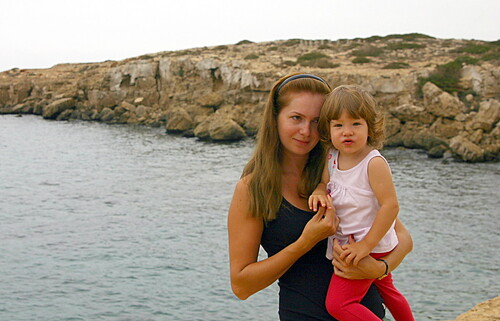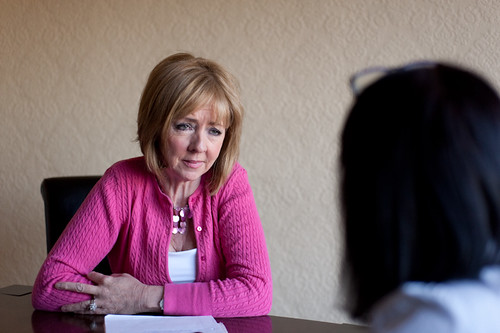 Working with children, I became a Harry Potter fan out of both necessity and real appreciation. J.K. Rowlings’ world of wizards and magic is a fantasy, but the themes of these books are human and real. Among the most frightening characters in Rowlings’ epic struggles of power and control, good vs. evil, are the Death Eaters and the Dementors.
Working with children, I became a Harry Potter fan out of both necessity and real appreciation. J.K. Rowlings’ world of wizards and magic is a fantasy, but the themes of these books are human and real. Among the most frightening characters in Rowlings’ epic struggles of power and control, good vs. evil, are the Death Eaters and the Dementors.
The Death Eaters are those in the wizard world who have made a pledge to support Lord Voldemort, whose vision of total domination rather than peaceful co-existence has been distorted by his hate and rage, and obsession with destroying Harry Potter. The Dementors are the terrifying, soul-sucking wraiths who feed on fear. What a relief that Death Eaters and Dementors aren’t real and aren’t about us! But Rowlings has created a thought-provoking twist.
By the last book, Harry Potter has discovered that he and Lord Voldemort have much in common. Harry alone must determine whether he is capable of making the necessary sacrifice for the greater good of those who depend on him to be their champion. Harry must defeat the Death Eaters and Dementors by conquering his own fear and rage with selfless love. Harry is not perfect, he has made many mistakes and hurt the ones he cares about, but he has this gift within him waiting to be discovered at the time of ultimate crisis.
What I find compelling about the Harry Potter books is the mirror they hold to our world. In our humanity, we all find ourselves having to figure out how to resolve inevitable conflicts and manage strong negative emotions. Parents and children facing divorce are certainly living through an emotional crisis. The question is, do we let rage and fear drive and perhaps distort our actions, or do we seek another way, one that may ask us to sacrifice power and control for the greater good of those who depend on us to be their champions–our children.
Collaborative Team Practice is an alternative dispute resolution process using interest-based negotiation and problem solving to reach agreements and sustainable resolutions. On the team, allied and neutral professionals provide support and guidance to manage strong negative emotions, suggest creative and equitable financial resolutions, and negotiate safe, developmentally responsive parenting plans. It can be a highly effective way to help families transition respectfully during the crisis of a divorce.
We know Collaborative Team Practice may not be the right choice for all families. However, it is a process that will work for many families. Our belief is that reaching agreements rather than perpetuating conflict is truly the way to be champions for children in the age of Death Eaters and Dementors.
 One of my favorite people, and among the wisest of my friends, is my hair stylist, Gina. I always look forward to any time we have to chat while my newly foiled tresses take their color. Recently, we had such an opportunity. We were talking about my work as a Collaborative neutral child specialist, hearing the voices of children whose parents are getting unmarried or separated. Gina shared a story I hadn’t heard, and graciously consented to let me blog about it.
Gina’s parents, like many other couples, went through some very rough patches in their marriage. Because they eventually committed to changing destructive patterns, and worked hard using appropriate community resources, they were able to turn things around in a healthy direction. But not while Gina was a child, after she was nearly grown.
Gina told me that as the youngest child, she had grown up hearing her parents say they would not separate or get a divorce until she had graduated from high school. They may have believed this decision was in her best interests. But to Gina, this decision “on her behalf” made her feel responsible for the conflict and pain that existed in the home. She couldn’t change things on her own, and felt trapped.
She believes that behavior patterns she was forced to normalize by growing up in an abusive family environment impacted her deeply, both as a child and an adult. She has worked very hard to establish healthy patterns for herself, has generously given back to the community, and devotedly raised a fine son. But because early social learning is so powerful in shaping us, she knows she must always be mindful about her adult relationships.
Just staying together when high conflict persists is not a protective factor for children. It is the high conflict itself that inflicts traumatic wounds. Children’s psyches absorb toxic emotional environments just as their bodies absorb lead, and with the same destructive consequences. The decision to separate or divorce should not be made lightly, especially when there are children involved. However, the important question must always be, what needs to be done to keep children out of harm’s way?
For many struggling families, Collaborative Team Practice offers a way to end a high conflict marriage or partnership and begin a healthier pattern of co-parenting after separation or divorce. Children in high conflict families with whom I have met during their parents’ divorce have expressed relief to go home after school to homes that are not filled with stress, anger and anxiety. Please go to www.collaborativelaw.org for more information.
One of my favorite people, and among the wisest of my friends, is my hair stylist, Gina. I always look forward to any time we have to chat while my newly foiled tresses take their color. Recently, we had such an opportunity. We were talking about my work as a Collaborative neutral child specialist, hearing the voices of children whose parents are getting unmarried or separated. Gina shared a story I hadn’t heard, and graciously consented to let me blog about it.
Gina’s parents, like many other couples, went through some very rough patches in their marriage. Because they eventually committed to changing destructive patterns, and worked hard using appropriate community resources, they were able to turn things around in a healthy direction. But not while Gina was a child, after she was nearly grown.
Gina told me that as the youngest child, she had grown up hearing her parents say they would not separate or get a divorce until she had graduated from high school. They may have believed this decision was in her best interests. But to Gina, this decision “on her behalf” made her feel responsible for the conflict and pain that existed in the home. She couldn’t change things on her own, and felt trapped.
She believes that behavior patterns she was forced to normalize by growing up in an abusive family environment impacted her deeply, both as a child and an adult. She has worked very hard to establish healthy patterns for herself, has generously given back to the community, and devotedly raised a fine son. But because early social learning is so powerful in shaping us, she knows she must always be mindful about her adult relationships.
Just staying together when high conflict persists is not a protective factor for children. It is the high conflict itself that inflicts traumatic wounds. Children’s psyches absorb toxic emotional environments just as their bodies absorb lead, and with the same destructive consequences. The decision to separate or divorce should not be made lightly, especially when there are children involved. However, the important question must always be, what needs to be done to keep children out of harm’s way?
For many struggling families, Collaborative Team Practice offers a way to end a high conflict marriage or partnership and begin a healthier pattern of co-parenting after separation or divorce. Children in high conflict families with whom I have met during their parents’ divorce have expressed relief to go home after school to homes that are not filled with stress, anger and anxiety. Please go to www.collaborativelaw.org for more information.  One of my favorite people, and among the wisest of my friends, is my hair stylist, Gina. I always look forward to any time we have to chat while my newly foiled tresses take their color. Recently, we had such an opportunity. We were talking about my work as a Collaborative neutral child specialist, hearing the voices of children whose parents are getting unmarried or separated. Gina shared a story I hadn’t heard, and graciously consented to let me blog about it.
Gina’s parents, like many other couples, went through some very rough patches in their marriage. Because they eventually committed to changing destructive patterns, and worked hard using appropriate community resources, they were able to turn things around in a healthy direction. But not while Gina was a child, after she was nearly grown.
Gina told me that as the youngest child, she had grown up hearing her parents say they would not separate or get a divorce until she had graduated from high school. They may have believed this decision was in her best interests. But to Gina, this decision “on her behalf” made her feel responsible for the conflict and pain that existed in the home. She couldn’t change things on her own, and felt trapped.
She believes that behavior patterns she was forced to normalize by growing up in an abusive family environment impacted her deeply, both as a child and an adult. She has worked very hard to establish healthy patterns for herself, has generously given back to the community, and devotedly raised a fine son. But because early social learning is so powerful in shaping us, she knows she must always be mindful about her adult relationships.
Just staying together when high conflict persists is not a protective factor for children. It is the high conflict itself that inflicts traumatic wounds. Children’s psyches absorb toxic emotional environments just as their bodies absorb lead, and with the same destructive consequences. The decision to separate or divorce should not be made lightly, especially when there are children involved. However, the important question must always be, what needs to be done to keep children out of harm’s way?
For many struggling families, Collaborative Team Practice offers a way to end a high conflict marriage or partnership and begin a healthier pattern of co-parenting after separation or divorce. Children in high conflict families with whom I have met during their parents’ divorce have expressed relief to go home after school to homes that are not filled with stress, anger and anxiety. Please go to www.collaborativelaw.org for more information.
One of my favorite people, and among the wisest of my friends, is my hair stylist, Gina. I always look forward to any time we have to chat while my newly foiled tresses take their color. Recently, we had such an opportunity. We were talking about my work as a Collaborative neutral child specialist, hearing the voices of children whose parents are getting unmarried or separated. Gina shared a story I hadn’t heard, and graciously consented to let me blog about it.
Gina’s parents, like many other couples, went through some very rough patches in their marriage. Because they eventually committed to changing destructive patterns, and worked hard using appropriate community resources, they were able to turn things around in a healthy direction. But not while Gina was a child, after she was nearly grown.
Gina told me that as the youngest child, she had grown up hearing her parents say they would not separate or get a divorce until she had graduated from high school. They may have believed this decision was in her best interests. But to Gina, this decision “on her behalf” made her feel responsible for the conflict and pain that existed in the home. She couldn’t change things on her own, and felt trapped.
She believes that behavior patterns she was forced to normalize by growing up in an abusive family environment impacted her deeply, both as a child and an adult. She has worked very hard to establish healthy patterns for herself, has generously given back to the community, and devotedly raised a fine son. But because early social learning is so powerful in shaping us, she knows she must always be mindful about her adult relationships.
Just staying together when high conflict persists is not a protective factor for children. It is the high conflict itself that inflicts traumatic wounds. Children’s psyches absorb toxic emotional environments just as their bodies absorb lead, and with the same destructive consequences. The decision to separate or divorce should not be made lightly, especially when there are children involved. However, the important question must always be, what needs to be done to keep children out of harm’s way?
For many struggling families, Collaborative Team Practice offers a way to end a high conflict marriage or partnership and begin a healthier pattern of co-parenting after separation or divorce. Children in high conflict families with whom I have met during their parents’ divorce have expressed relief to go home after school to homes that are not filled with stress, anger and anxiety. Please go to www.collaborativelaw.org for more information. 


 Unmarried and have children? You may be interested to know that “Collaborative Divorce” is not just for divorce. Learn how the collaborative process can help you.
First, it may be relieving to know that you are not alone. There are some interesting recent statistics related to marriage and children. Nearly half of children in America are born outside of marriage. And, for women under 30, most children are born outside of marriage.
Whether you are married or not, if you separate from the other parent, you’ll need to figure out custody, parenting time and financial support issues related to your children. These are legal issues that should be finalized in a court order, either by agreement reached in the collaborative process or mediation, or by a court decision after a trial.
There is a great online resource related to unmarried parents (useful to both unmarried mothers and unmarried fathers),
Unmarried and have children? You may be interested to know that “Collaborative Divorce” is not just for divorce. Learn how the collaborative process can help you.
First, it may be relieving to know that you are not alone. There are some interesting recent statistics related to marriage and children. Nearly half of children in America are born outside of marriage. And, for women under 30, most children are born outside of marriage.
Whether you are married or not, if you separate from the other parent, you’ll need to figure out custody, parenting time and financial support issues related to your children. These are legal issues that should be finalized in a court order, either by agreement reached in the collaborative process or mediation, or by a court decision after a trial.
There is a great online resource related to unmarried parents (useful to both unmarried mothers and unmarried fathers),  Working with children, I became a Harry Potter fan out of both necessity and real appreciation. J.K. Rowlings’ world of wizards and magic is a fantasy, but the themes of these books are human and real. Among the most frightening characters in Rowlings’ epic struggles of power and control, good vs. evil, are the Death Eaters and the Dementors.
Working with children, I became a Harry Potter fan out of both necessity and real appreciation. J.K. Rowlings’ world of wizards and magic is a fantasy, but the themes of these books are human and real. Among the most frightening characters in Rowlings’ epic struggles of power and control, good vs. evil, are the Death Eaters and the Dementors.
 The “Rule of Relationship” is one of the most powerful forces in our lives. Often we are not even aware of its existence. In a divorce, it can be more powerful than the rule of law.
Here is how it works. Let’s assume you and your spouse are separated but you do not have any legal document regulating your separation or parenting. You have informally agreed to share weekends with the children and you pick the children up from your spouse’s home of Friday, promising to return them by 6:00 p.m. on Sunday. What if you decide not to return the children at that time? You will not have broken any law since there is no divorce or court order. Yet the consequences of your decision may be even more severe than any punishment a court could order as you have violated the “Rule of Relationship.” You may have damaged trust in a manner that could be very difficult to repair.
Maintaining some level of trust is crucial in almost all situations. It is tempting to think that, in a divorce, there is no trust. Indeed, your spouse may even have been unfaithful causing you to believe that all trust is lost. But, in reality, there is almost always some degree of trust that exists in any relationship. If you literally had no trust at all, you would not ever allow your spouse to even be in the presence of your children, since you need to trust them to provide for their well being and safety, for at least some portion of their week. Despite the broken promises that can give rise to a divorce, most people are able to find a way to retain some basic level of trust, out of necessity and concern for their children.
Trust is generally regulated by the “Rule of Relationship” and not by laws. Trust can only be created or lost through behavior. When it comes to regulating day to day behavior no court or government, no matter how well intended, can intervene on a daily basis to address these difficult situations. Parents are often left with their own laws, the Rule of Relationship,” to help them parent their children and regulate their lives. That is one of the reasons more and more parents are choosing out of court solutions, such as
The “Rule of Relationship” is one of the most powerful forces in our lives. Often we are not even aware of its existence. In a divorce, it can be more powerful than the rule of law.
Here is how it works. Let’s assume you and your spouse are separated but you do not have any legal document regulating your separation or parenting. You have informally agreed to share weekends with the children and you pick the children up from your spouse’s home of Friday, promising to return them by 6:00 p.m. on Sunday. What if you decide not to return the children at that time? You will not have broken any law since there is no divorce or court order. Yet the consequences of your decision may be even more severe than any punishment a court could order as you have violated the “Rule of Relationship.” You may have damaged trust in a manner that could be very difficult to repair.
Maintaining some level of trust is crucial in almost all situations. It is tempting to think that, in a divorce, there is no trust. Indeed, your spouse may even have been unfaithful causing you to believe that all trust is lost. But, in reality, there is almost always some degree of trust that exists in any relationship. If you literally had no trust at all, you would not ever allow your spouse to even be in the presence of your children, since you need to trust them to provide for their well being and safety, for at least some portion of their week. Despite the broken promises that can give rise to a divorce, most people are able to find a way to retain some basic level of trust, out of necessity and concern for their children.
Trust is generally regulated by the “Rule of Relationship” and not by laws. Trust can only be created or lost through behavior. When it comes to regulating day to day behavior no court or government, no matter how well intended, can intervene on a daily basis to address these difficult situations. Parents are often left with their own laws, the Rule of Relationship,” to help them parent their children and regulate their lives. That is one of the reasons more and more parents are choosing out of court solutions, such as 
